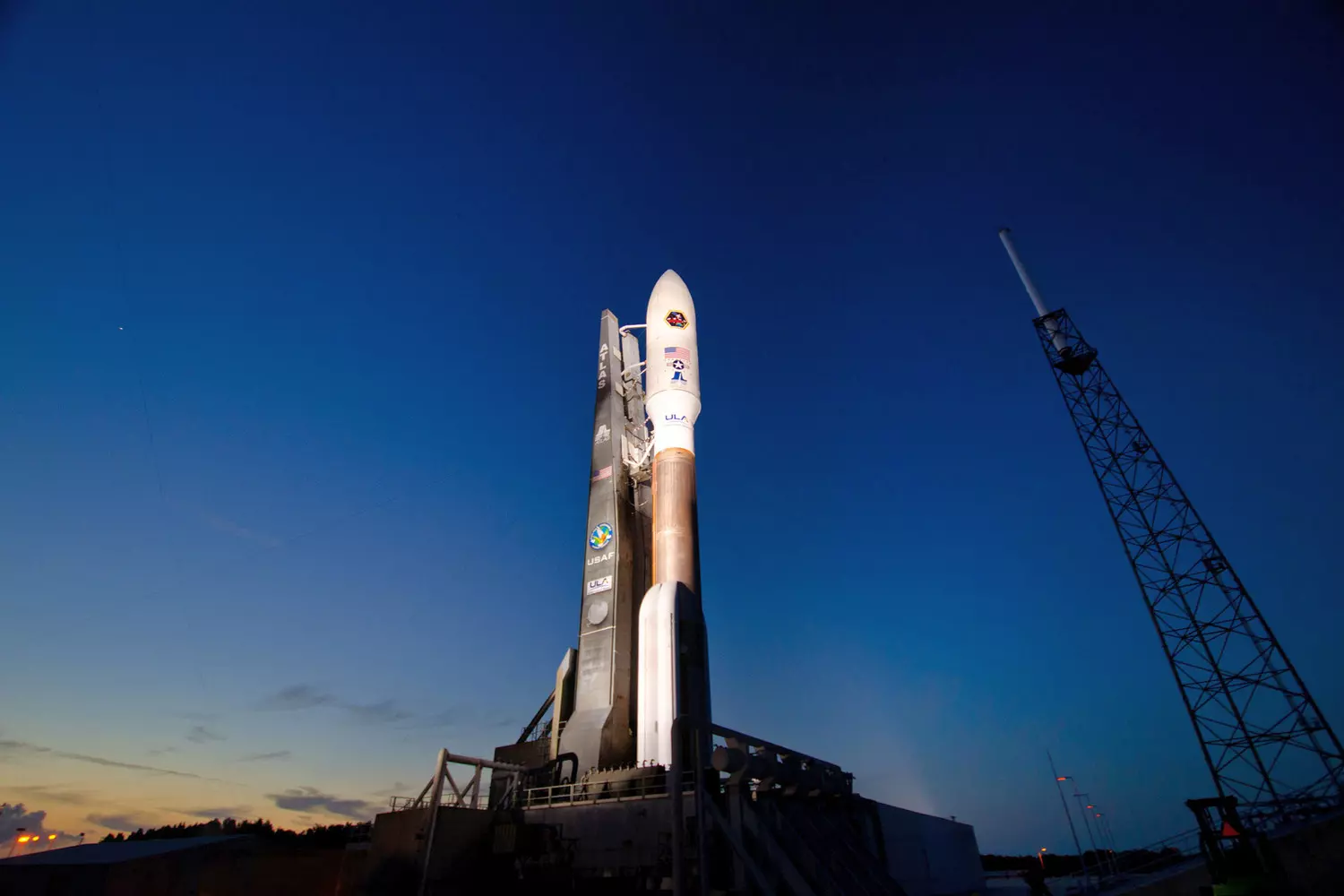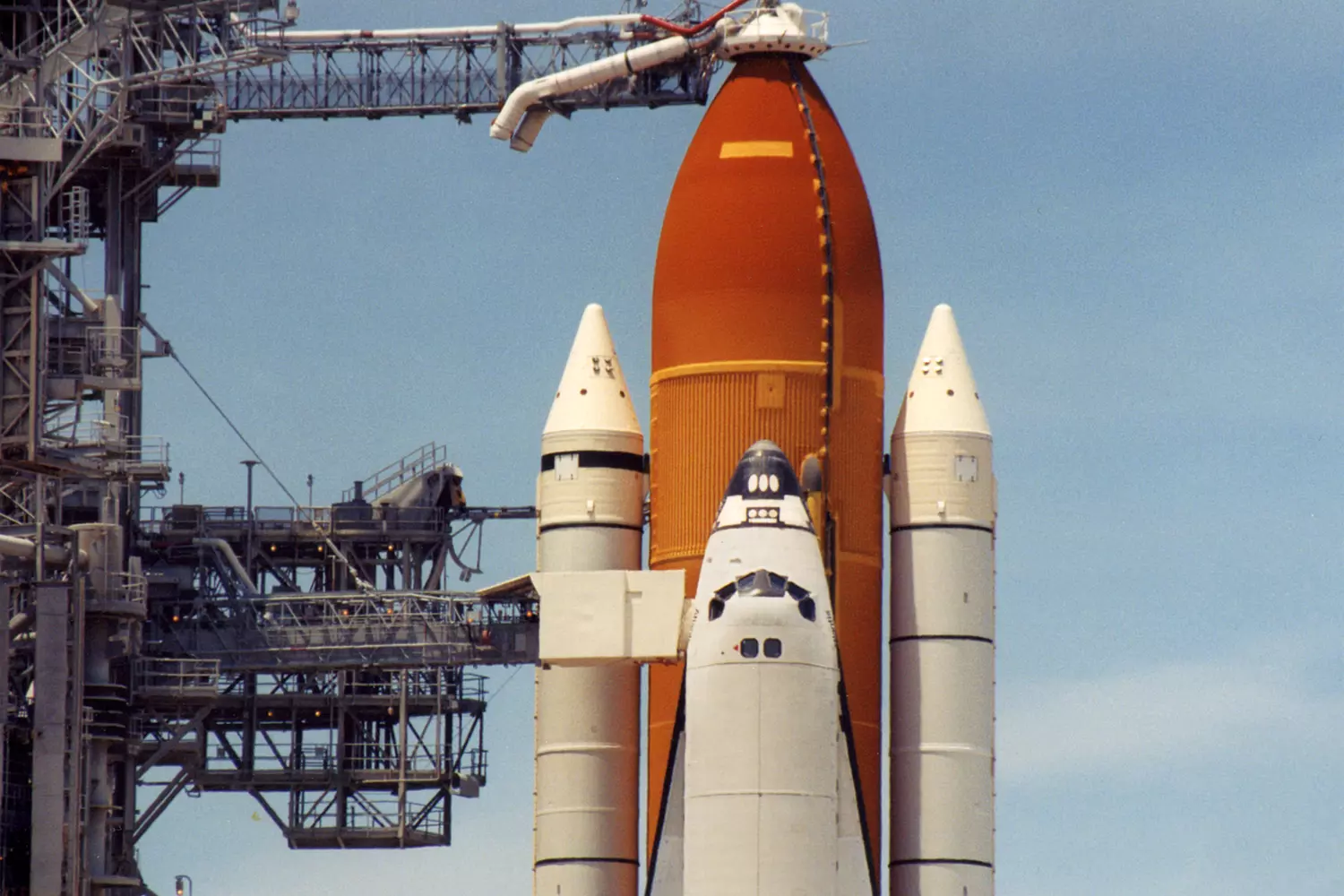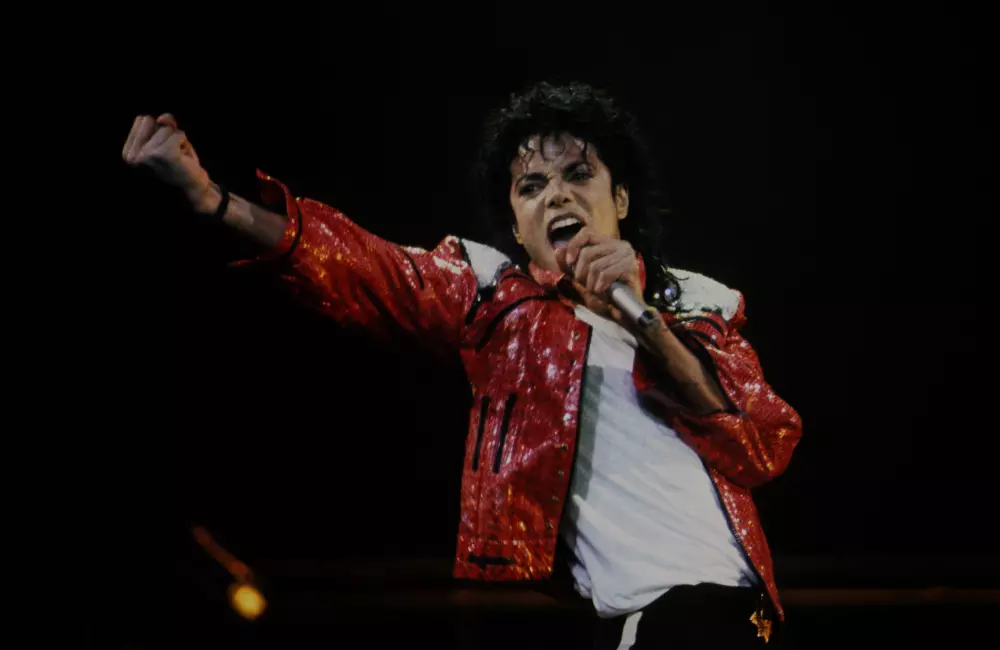"If you really want it, you can fly to space!" At least in the USA. Today, American Butler is broadcasting straight from a spacesuit. We will tell you about the most important, fascinating, and dramatic moments in the history of space exploration.
We’ll also answer the big question of our time: who really rules the ISS — Russia or the USA?
Read the article to find out if Americans really landed on the Moon, how much it costs to stay on orbit, and why the US stopped launching manned space missions.
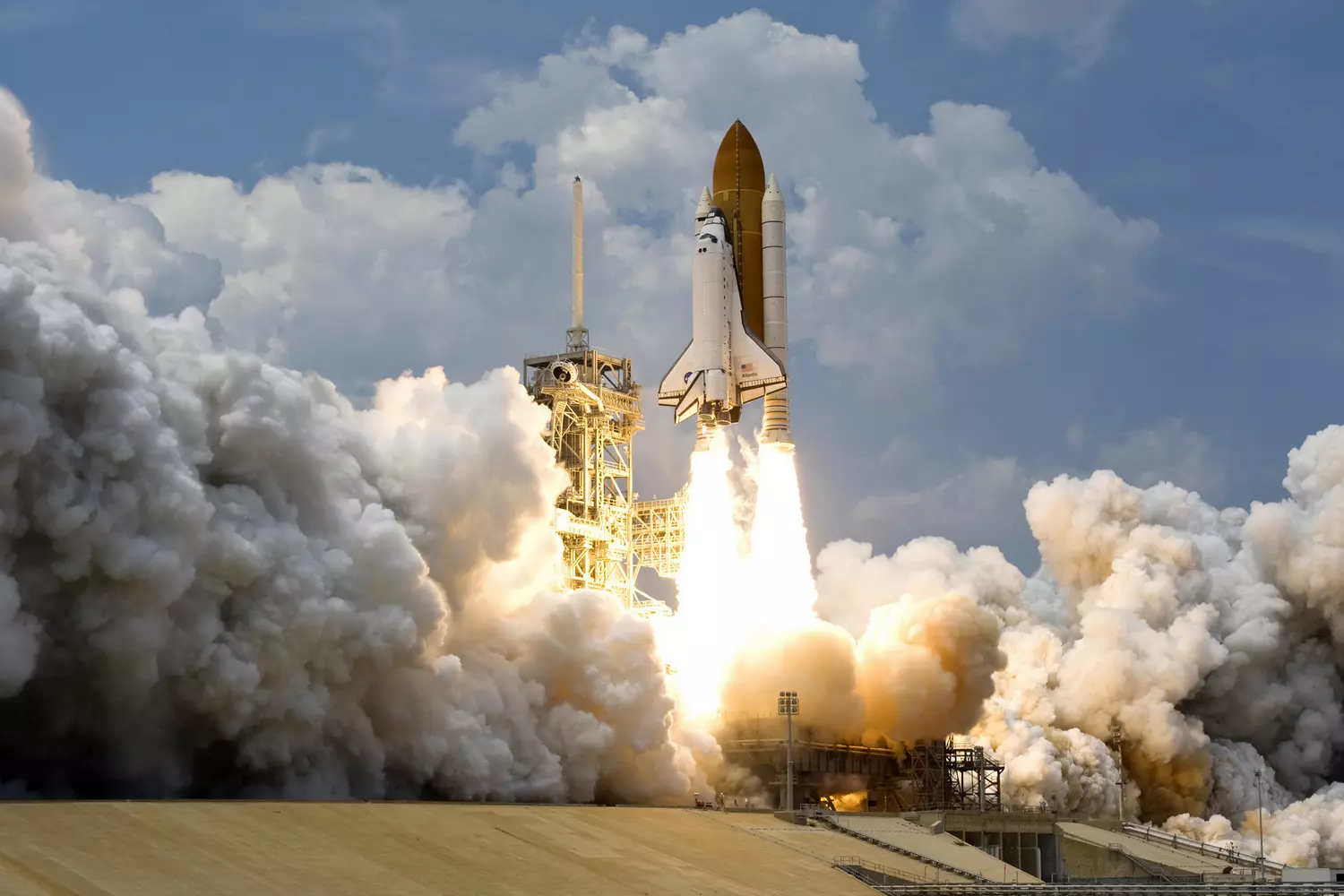
American Space Exploration: From Struggles to the Stars
A comedian once said that if there's a piece of land with no flags on it, Americans will do whatever it takes to plant one there. The history of space exploration still has many mysteries. Who really took the lead, the Americans or the Russians? Was the Moon landing real? How can an ordinary person become an astronaut?
American Butler will answer it all — we’ll tell you what the U.S. space industry is really about.
How the U.S. Caught Up with the USSR
America's journey into space began in 1915 with the creation of NACA (National Advisory Committee for Aeronautics), a research body focused on aviation and space. But this was all theory. By 1958, NACA had transformed into NASA (National Aeronautics and Space Administration), marking the official start of America's race into space. At the same time, the Cold War rivalry between the U.S. and the USSR intensified, demanding rapid action — satellites, crewed missions, and scientific breakthroughs.
It’s important to clarify that NASA is a civilian agency responsible for scientific and commercial space missions. All military space programs are under the control of the U.S. Air Force's space divisions, with no public access to classified projects — just as in any other country with an advanced space program.
Who Made It to Space First?
On October 4, 1957, the Soviet Union launched the world’s first artificial satellite — Sputnik-1. This was a wake-up call for the U.S., but not just a surprising one—it was full-on panic. If the USSR could send a satellite into orbit, then it could also launch a nuclear warhead straight to American soil.
The U.S. had always considered itself the global leader in science and technology. But Sputnik proved otherwise. A small metal sphere, roughly the size of a basketball (58 cm in diameter), weighing 83.6 kg, orbited Earth while emitting a simple “beep-beep” signal, audible even on basic radio receivers. This sound became the opening note of the Space Race.
Kennedy Space Center Florida Tour
The Invention of the Ballistic Missile
Here comes a slightly sensitive topic. The foundation for the first intercontinental missiles was laid… by the Germans!
During World War II, Wernher von Braun, a German engineer, developed the V-2 rocket, the world’s first ballistic missile capable of reaching space.
After the war, the U.S. and the USSR engaged in a secret race to recruit German engineers. Von Braun ended up in the U.S., where he became the head of the American space program. Meanwhile, his Soviet counterpart, Sergei Korolev, led the development of the R-7 rocket, which would later launch Sputnik-1 into orbit.
The U.S. Response to the Soviet Challenge
After the failure to launch the first satellite, America had to react quickly. On July 29, 1958, President Dwight D. Eisenhower signed an order establishing NASA. Until then, space research had been conducted by the military, but it became clear that a dedicated civilian agency was needed to focus entirely on space exploration.
NASA received massive funding and set an ambitious goal: to catch up with and surpass the USSR.
Why Did the U.S. Lag Behind the USSR?
Even after NASA was created, the Soviet Union continued to dominate space exploration:
- 1959
The Soviet probe Luna-2 became the first human-made object to reach the Moon. - 1961
Yuri Gagarin became the first human to travel into space. The U.S. had lost again! - 1965
Alexei Leonov performed the first-ever spacewalk.
But America wasn’t giving up. In 1961, President John F. Kennedy made a bold announcement: Americans would land on the Moon before the end of the decade.
NASA went all-in on the Apollo Program, investing a mind-blowing $25 billion (which is around $160 billion in today’s money).
And, as history shows, on July 20, 1969, the impossible happened — Neil Armstrong became the first human to walk on the Moon.
The First American in Space
When people talk about early space pioneers, Yuri Gagarin is always mentioned as the first human to leave Earth. But just 23 days after Gagarin’s flight, the U.S. introduced its own hero: Alan Shepard.
On May 5, 1961, astronaut Alan Bartlett Shepard Jr. completed a 15-minute suborbital flight aboard the Mercury-Redstone 3 spacecraft, famously known as "Freedom 7."
Unlike Gagarin, who completed a full orbit around the Earth, Shepard's mission was suborbital — his rocket reached an altitude of 187 km, after which his capsule safely splashed down in the Atlantic Ocean.
How Did the U.S. Choose Its First Astronaut?
Before sending a human into space, NASA handpicked seven elite pilots — the legendary "Mercury Seven", the first American astronauts.
This group included John Glenn (the first American to orbit Earth), Gus Grissom, and others.
Shepard was chosen for the first flight because NASA wasn’t confident about safely achieving full orbit. The U.S. decided to test a short "up-and-down" mission first before attempting a complete orbit.
Why Did the Americans Lose to Gagarin?
- The USSR had a more powerful rocket (R-7), while NASA was still developing an equivalent.
- Shepard’s flight was delayed by 23 days because the Redstone rocket needed modifications.
- His flight was shorter and simpler than Gagarin’s, but still an incredible milestone.
Even though the USSR took the lead, Alan Shepard became a national hero. He was welcomed home by President John F. Kennedy, and the Space Race was far from over.
In 1971, Shepard made history once again — he became the fifth person to walk on the Moon during the Apollo 14 mission. And he didn’t just walk — he played golf on the Moon, using a makeshift club!
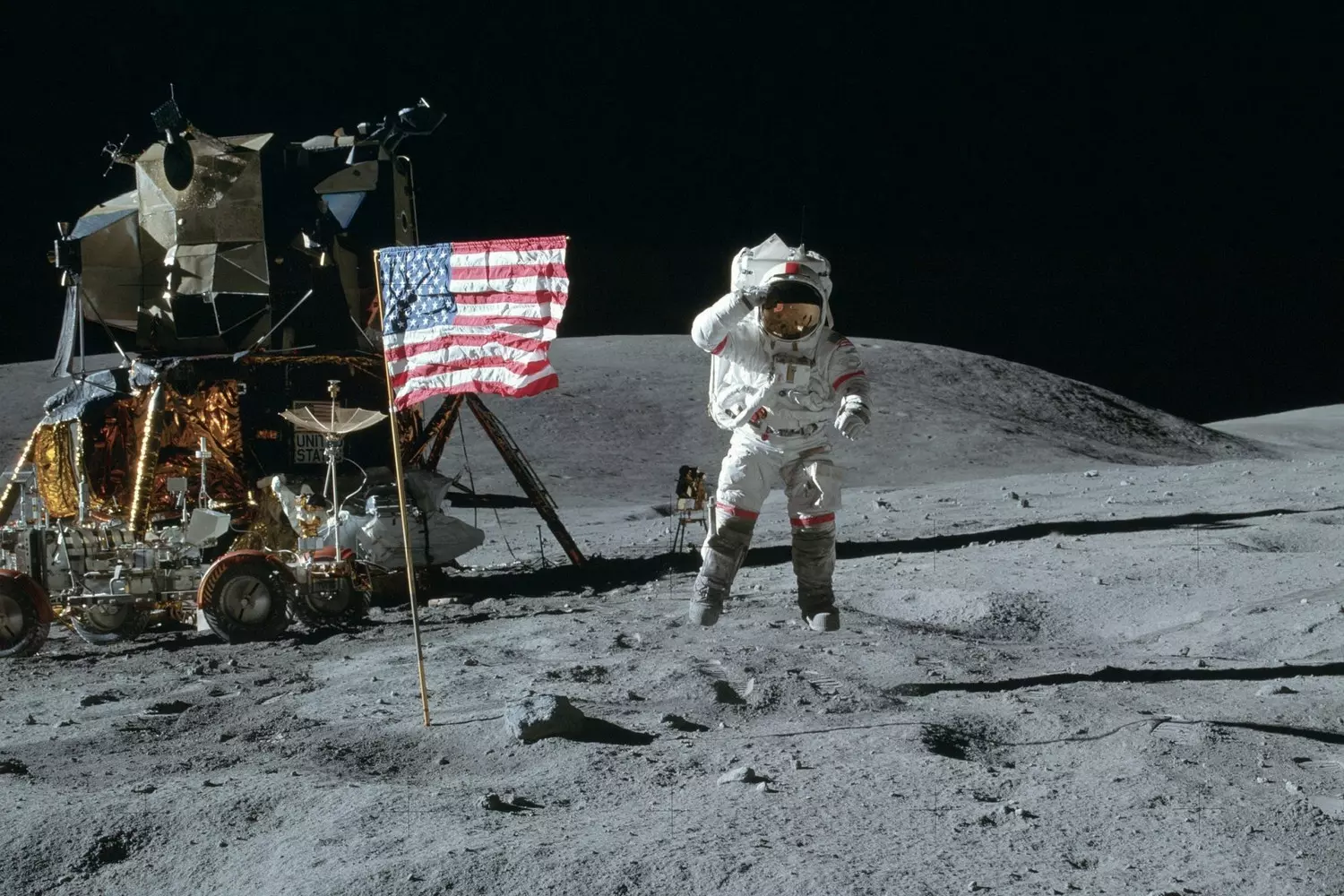
The Apollo Program: Conquering the Moon
The Apollo Program was one of the most ambitious and expensive projects in human history. Thanks to this program, on July 21, 1969, humans set foot on the Moon for the first time. But behind this historic event were years of development, tragic losses, triumphs, and the tireless work of thousands of NASA engineers and astronauts.
After the Soviet Union sent the first human into space (Yuri Gagarin, April 12, 1961), the United States could not afford to fall behind. In his famous speech on May 25, 1961, President John F. Kennedy declared:
"I believe that this nation should commit itself to achieving the goal, before this decade is out, of landing a man on the Moon and returning him safely to Earth."
America accepted this challenge, and the race to the Moon began. NASA launched Project Apollo, which developed in the following stages:
Phase 1: Gemini (1965-1966) — Training for Apollo
Before sending humans to the Moon, NASA conducted a series of Gemini missions to practice spacecraft docking, spacewalks, and long-term space missions.
Phase 2: Apollo 1 — Tragedy and Lessons Learned
Date: January 27, 1967
Crew: Gus Grissom, Ed White, Roger Chaffee
The first crewed Apollo mission ended in disaster. During a ground test, a fire broke out inside the command module, killing all three astronauts. The cause was an electrical spark in a pure oxygen environment. After this, NASA completely redesigned the spacecraft’s safety systems.
Phase 3: Apollo 7 & Apollo 8 — First Steps Toward the Moon
- Apollo 7 (1968)
The first successful crewed test of the command module in Earth orbit. - Apollo 8 (December 1968)
The first human mission to orbit the Moon. The crew saw the far side of the Moon and captured the famous "Earthrise" photograph.
Phase 4: Apollo 11 – The First Moon Landing
Launch Date: July 16, 1969
Crew: Neil Armstrong, Buzz Aldrin, Michael Collins
On July 20, 1969, the lunar module "Eagle" successfully landed in the Sea of Tranquility. On July 21, 1969, at 02:56 UTC, Neil Armstrong stepped onto the Moon, saying his famous words:
"That's one small step for man, one giant leap for mankind."
Buzz Aldrin joined him 19 minutes later. Time spent on the Moon: 2 hours and 31 minutes. Achievements:
- Planted the U.S. flag.
- Collected lunar soil samples.
- Left a commemorative plaque.
On July 24, 1969, the crew safely returned to Earth, splashing down in the Pacific Ocean.
Apollo 11 was NASA’s greatest triumph and a defining moment in the Space Race.
All Apollo Lunar Missions
After Apollo 11, NASA sent six more missions to the Moon, each advancing technology and scientific research:
- Apollo 12
1969 — First precise landing in a planned location. - Apollo 13
1970 — The mission was aborted due to an oxygen tank explosion, but the crew safely returned to Earth. - Apollo 14
1971 — First extensive lunar research mission. Alan Shepard famously played golf on the Moon. - Apollo 15
1971 — First mission to use a lunar rover. - Apollo 16
1972 — Exploration of lunar highlands. - Apollo 17
1972 — The last crewed Moon mission.
Apollo 17 was the last time humans set foot on the Moon.
Why Was the Apollo Program Canceled?
Despite its success, the U.S. ended the Apollo program in the early 1970s due to several factors:
- 02. Political Priorities
The Vietnam War required significant funding. - 03. Lack of Resources
The Moon did not yield valuable resources to justify further missions.
Did Humans Really Land on the Moon?
We may not get a definitive answer anytime soon. But with 75% certainty — yes, they did. When the footage of Neil Armstrong and Buzz Aldrin stepping onto the Moon was released in July 1969, a wave of conspiracy theories emerged. Both American and Soviet skeptics began scrutinizing the evidence, looking for signs of a hoax. Some claimed the U.S. faked the Moon landing in a studio, using it as a distraction from the Vietnam War and a way to one-up the Soviet Union after their triumph with Yuri Gagarin.
Among the most popular arguments were:
- The flag appeared to wave, even though there is no atmosphere on the Moon.
- Astronauts’ jumps were too low, considering the lower gravity.
- No visible craters under the lunar module's landing site.
- Planting the flag in lunar soil should have been impossible.
However, even former Soviet cosmonauts, engineers, and scientists — America's supposed rivals — deny the hoax theory. They argue that the Moon landing was real. In fact, between 1969 and 1972, the U.S. sent astronauts to the Moon five more times.
It's possible that the U.S. government did stage some studio footage — but only to make the landing look more cinematic and engaging for the public. To this day, no solid evidence has been found to prove the Moon landing was faked.
What’s Next?
Although Apollo ended, its legacy lives on:
- Inspiring Future Space Programs
Led to projects like the Space Shuttle, Skylab, and Artemis. - Technological Advancements
Many innovations developed for Apollo are still used today. - The Lunar Race Continues
NASA, SpaceX, and China plan new Moon missions.
NASA’s Artemis Program aims to return astronauts to the Moon by 2025, with plans to establish a permanent lunar base. The Apollo legacy continues, setting the stage for humanity’s next great space adventure.
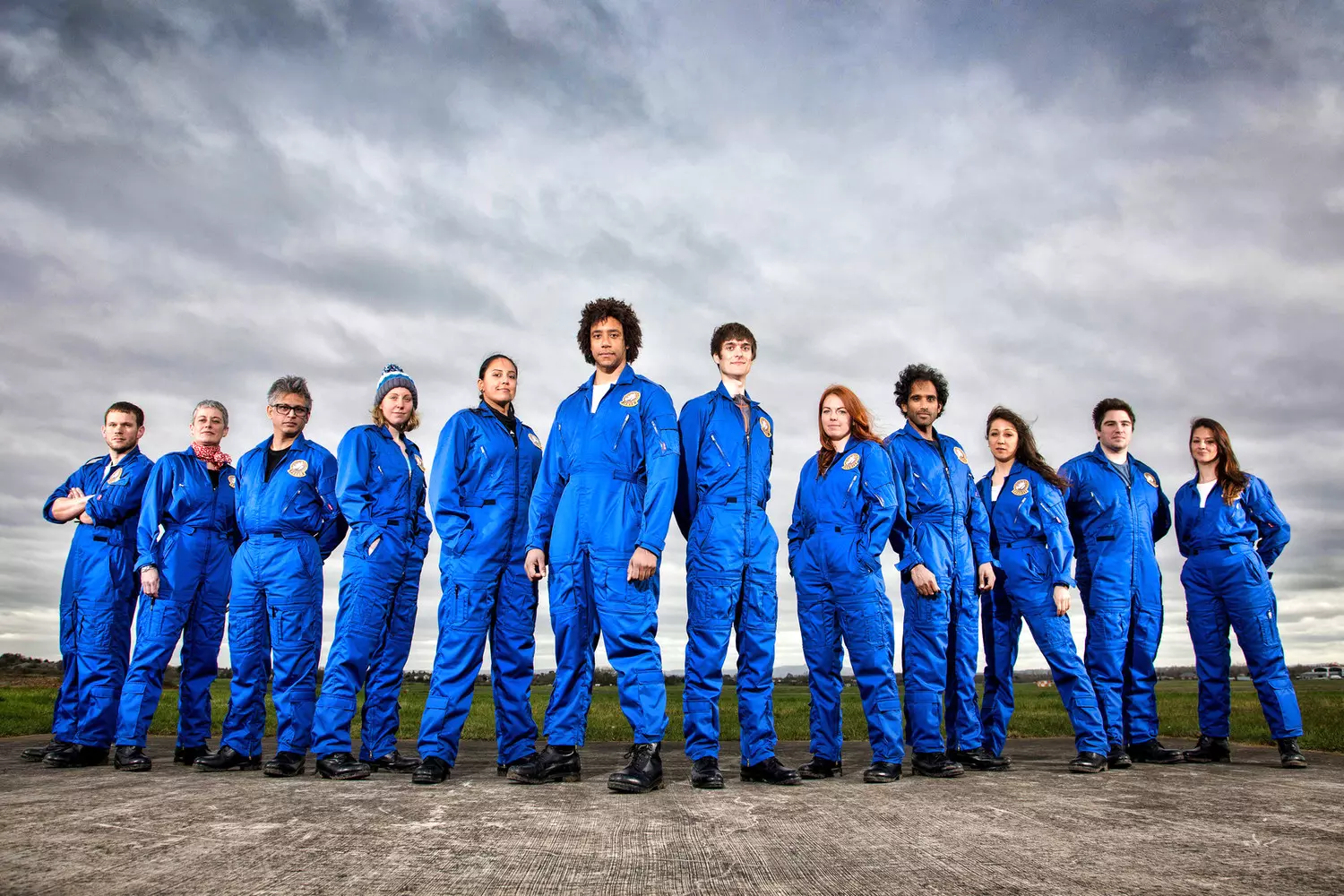
The Space Shuttle Program: Revolution or Mistake?
After the Apollo era, NASA faced a major problem: single-use rockets were too expensive. To sustain space exploration, a reusable spacecraft was needed — one that could regularly transport astronauts and cargo to orbit. This was the birth of the Space Shuttle program.
The idea was ambitious: an orbital vehicle that could launch like a rocket and land like a plane. However, the dream of cheap and regular space travel turned into a mix of achievements, tragedies, and staggering financial costs.
After the successful Apollo missions, the U.S. slowed its space race efforts. The Moon had been reached, but no colonies were built, no permanent bases were established. NASA decided the next goal was to create an affordable transport system for space, allowing for regular crew and cargo deliveries to orbit. Development began in 1969, and in 1972, President Richard Nixon officially approved the Space Shuttle program.
The Main Concept of the Shuttle
- Reusable
Unlike single-use rockets, the shuttle was meant to fly multiple times. - Economical (in theory)
It was expected that each launch would be significantly cheaper. - Cargo Capacity
The shuttle could carry equipment, satellites, and space station modules to orbit.
How Was the Shuttle Designed?
The shuttle system consisted of three main parts:
- 01. Orbiter
The actual shuttle carrying the crew and payloads. - 02. External Fuel Tank
The large orange tank holding fuel for the main engines. - 03. Two Solid Rocket Boosters
Provided 80% of thrust at launch.
Interesting fact: After launch, the boosters fell into the ocean and were reused, while the external fuel tank burned up in the atmosphere.
First Launches: Triumph and Shock
First Flight: Columbia (STS-1), 1981
On April 12, 1981 (coinciding with the 20th anniversary of Yuri Gagarin’s flight), the Columbia shuttle completed the first-ever reusable spacecraft launch. It was a historic achievement—a crewed spacecraft that could return to Earth and land like an airplane.
NASA celebrated victory. Space travel seemed closer than ever, and for the next three decades, shuttles became the backbone of the U.S. space program.
Achievements of the Shuttle Program
- Satellite Deployment
Shuttles launched Hubble Space Telescope and numerous communication satellites. - In-Orbit Repairs
Astronauts repaired Hubble in space, saving a crucial mission. - International Collaboration
Shuttles played a key role in the construction of the International Space Station (ISS). - Diversity in Space
The program opened doors for women and minorities to become astronauts.
Interesting fact: Columbia could spend up to 17 days in space and carry up to 25 tons of cargo.
Disasters, Failures, and Billions Wasted
The Space Shuttle era had tragic moments. The Challenger (1986) and Columbia (2003) disasters resulted in the deaths of 14 astronauts and temporarily halted flights. After each accident, debates erupted over the risks and costs of space travel. Activists questioned whether the U.S. should continue competing in space when accidents were inevitable.
The last operational shuttle, Atlantis, primarily serviced the ISS and U.S. Department of Defense missions. Since 2011, NASA has not launched any crewed spacecraft. Instead, American astronauts fly to space aboard Russian Soyuz rockets.
Interesting fact: The U.S. scrapped billions of dollars on programs like Constellation, which was supposed to return humans to the Moon but never happened.
What Else Did the U.S. Do in Space?
Over 60+ years, the U.S. conducted hundreds of orbital and suborbital missions. Here’s a quick summary of America’s major space projects:
- Gemini (1960s)
Predecessor to Apollo, testing spacewalks, docking, and long-duration missions. - Apollo (1961 – 1972)
The legendary Moon landing program. - Explorer
Series of satellites for space research. - Viking
The first Mars landers to analyze the planet’s surface. - Echo
Early communications satellite experiments. - Mariner
Missions to study Venus, Mars, and Mercury. - Skylab (1973 – 1979)
America’s first space station, paved the way for ISS missions. - Voyager (1977 – present)
Probes exploring the outer planets and now sending data from interstellar space. - Pioneer
Early probes studying the solar system and deep space. - Hubble Space Telescope (1990 – present)
One of NASA’s greatest achievements, providing breathtaking views of the universe. - Curiosity Rover (2012 – present)
A long-lasting Mars rover studying the planet’s climate and geology. - New Frontiers
Missions exploring distant parts of the solar system. - Cassini-Huygens (1997 – 2017)
Saturn exploration mission, discovering new details about its moons and rings. - Artemis Program (2020s – ...)
NASA’s future Moon missions, planning a permanent lunar base by the late 2020s.
U.S. vs. Russia: A New Space Race?
Comparing the U.S. and Russia in space is tricky since both played key roles in history. But here are some measurable differences between the two space powers.
United States
- 01. Primary Goal — Scientific, commercial, and defense projects; prioritizing space resource utilization and private sector involvement.
- 02. Number of ISS Modules (2018 data) — 7 out of 15.
- 03. NASA’s Annual Budget — ~$20 billion.
Russia
- 01. Primary Goal — Maintaining prestige as a spacefaring nation, but lacking resources for large-scale practical applications.
- 02. Number of ISS Modules (2018 data) — 5 out of 15.
- 03. Roscosmos’ Annual Budget — ~$2.4 billion.
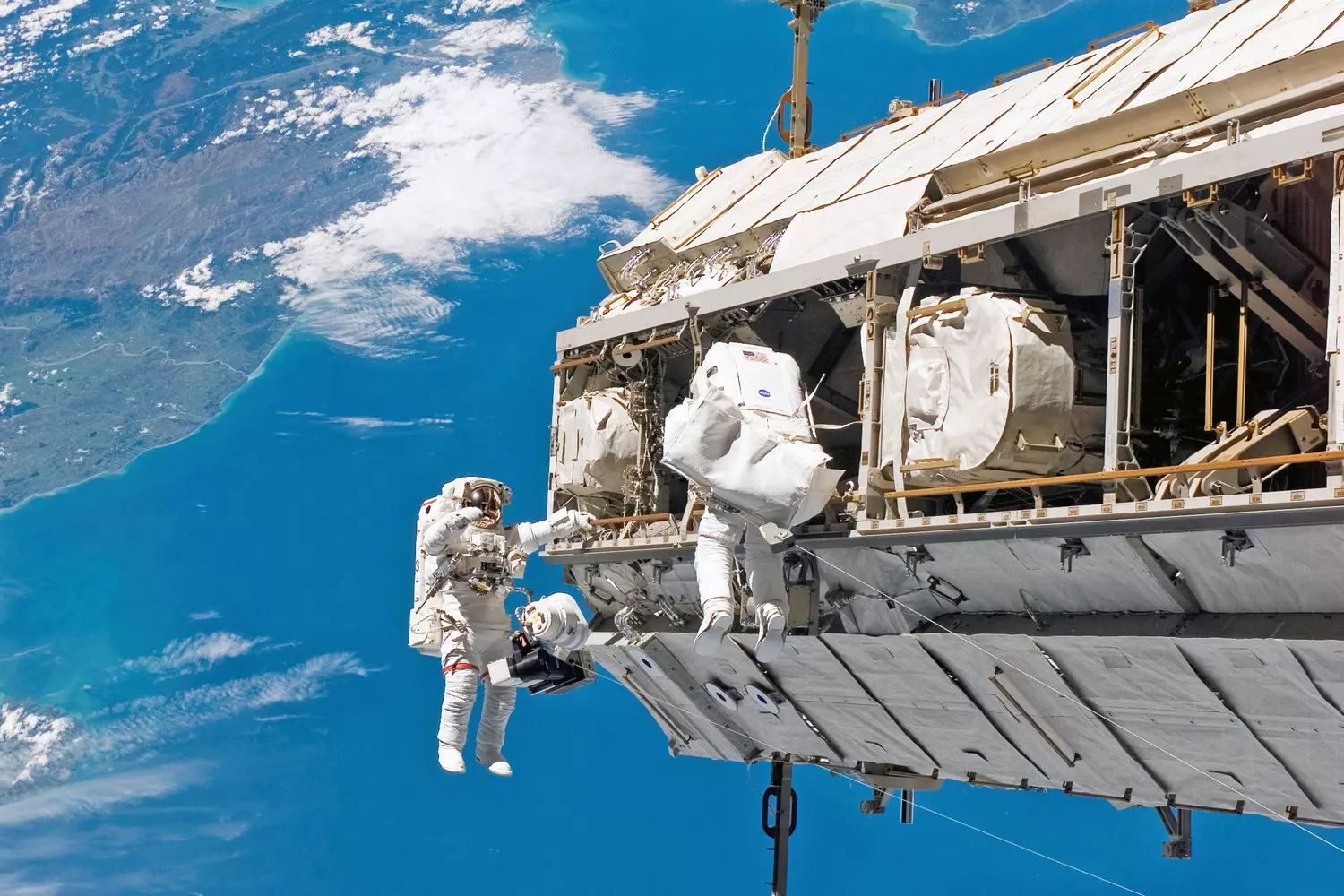
Elon Musk and SpaceX: Changing the Game
Back in the 1960s, the U.S. and the Soviet Union fought for dominance in space. In the 21st century, the race has shifted — from government agencies to private companies. And at the forefront stands Elon Musk and SpaceX.
From early failures to reusable rockets and Mars colonization, let’s break down how one man disrupted an industry that had been stuck in old bureaucratic ways for decades.
In the early 2000s, Musk decided that humanity needed to colonize Mars. The problem? Space travel was ridiculously expensive, and NASA, along with Roscosmos, still followed the single-use rocket model.
Musk’s Plan:
- Reduce launch costs with reusable rockets.
- Build rockets in-house instead of relying on government contractors.
- Make a private company the leader in space exploration.
At first, nobody believed it would work. In 2008, the first three SpaceX launches failed. Funding was running out, and investors were losing confidence. But on the fourth attempt, the launch succeeded. That moment changed everything—NASA signed a contract with SpaceX to deliver cargo to the ISS.
SpaceX's Breakthrough Achievements
Falcon 9: The First Reusable Rocket
SpaceX’s Falcon 9 rocket revolutionized space travel. The game-changing moment came in 2015, when SpaceX successfully landed the first stage of the Falcon 9 back on Earth after launch.
Why was this so important? Imagine throwing away an entire airplane after each flight. That’s how inefficient space travel used to be. Now, rockets can be reused dozens of times, cutting launch costs dramatically.
Dragon: Private Spacecraft for Astronauts
The Dragon spacecraft replaced Russian Soyuz capsules for sending astronauts to the International Space Station (ISS). NASA no longer has to pay $90 million per seat—SpaceX does it faster and cheaper.
Starship: The Mars and Moon Rocket
Falcon 9 was just the beginning. SpaceX is now working on Starship — the most powerful rocket ever built.
- Goal: A fully reusable spaceship for missions to Mars and the Moon.
- Payload: 100 tons — twice the power of Apollo’s Saturn V rocket.
- Progress: First test flights in 2023, with ongoing improvements.
If everything goes as planned, Starship will take humans to Mars within this century.
Starlink: Internet from Space
Beyond rockets, SpaceX is changing the internet game with its Starlink project — a global satellite internet network.
- 30,000+ satellites
The largest orbital network ever built. - High-speed internet
Even in remote deserts and jungles. - Main goal: Global connectivity
From the Arctic to Africa.
Starlink is already available in 60+ countries, and Musk plans to connect the entire world.
Polaris and Space Tourism
SpaceX isn’t just working with NASA — it’s opening the door to space tourism.
- Polaris Dawn
The first fully private spacewalk mission (launch planned for 2024). - Inspiration4
The first mission where no professional astronauts were onboard.
Right now, space tourism costs millions, but in the future, SpaceX aims to make it as affordable as a luxury cruise.
What’s Next for SpaceX?
- Artemis Lunar Mission with NASA (2026)
Starship will land humans on the Moon. - Mars Expedition (2030s)
Musk’s ultimate goal: a human colony on Mars. - 50+ launches per year
SpaceX launches more rockets than the rest of the world combined.
In just a decade, SpaceX has done what took NASA 50 years — turning spaceflight into a private industry. Space is no longer just for government astronauts — it’s for companies, civilians, and tourists. Do you believe Musk will send humans to Mars?
How to Travel to Space
This question is no longer just a childhood fantasy — in the U.S., anything is possible if you have the money. While space tourism isn’t yet widely accessible, a select few civilians have already made it to orbit — just eight private individuals in history.
Private companies are leading the way in commercial spaceflight. Prices and training requirements vary, but one thing is certain: it’s extremely expensive and physically demanding.
For instance, Cirque du Soleil founder Guy Laliberté paid $35 million for his trip to space and spent over a year in intense physical training.
If you’re serious about going to space, you even have options! Several companies are competing to send private citizens into orbit:
- Blue Origin
Jeff Bezos’ space venture, offering suborbital flights. - SpaceX
Elon Musk’s revolutionary space company, focused on deep-space travel. - Virgin Orbit
Richard Branson’s company, already conducting zero-gravity flights. - Rocket Lab
Specializing in small-payload launches — think of them as "space couriers." - Axiom Space
Developing the first private space station and planning tourist trips to the ISS.
The beauty of space exploration is that everything NASA creates — every spacecraft, photo, video, and discovery — is considered public property in the U.S. This means you can freely explore these wonders — all you need to do is visit the right places.
American Butler is here to help! Whether you need transportation, guided tours, or VIP access, we’ll take you to the most legendary space sites in the U.S.
Got questions? Leave a request on our website, and we’ll be happy to assist you in planning an unforgettable space-themed journey!
